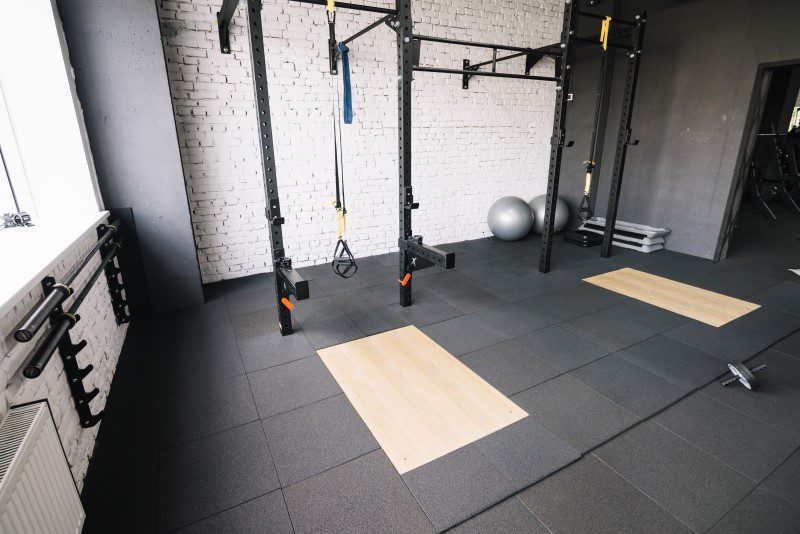When it comes to choosing the perfect flooring for your gym space, safety and durability come to mind. Among the most trending solutions for gym flooring, the top contenders are rubber mats and interlocking tiles. Rubber mats and interlocking tile solutions have their own benefits and considerations. It all comes down to your gym flooring requirements and criteria.
For the gym owners to make the right choice and decision, we consider certain aspects that determine which flooring solution is better for the gym space: ultimate rubber mats versus interlocking tiles showdown.
Rubber mats vs. interlocking tiles
The ultimate battle between rubber mats and interlocking tiles in gym flooring helps you understand which option is best for your fitness space. For an easier decision, let’s explore the winning factors.
Solid material matter
The first winning factor in rubber mats vs. interlocking tiles is material. Rubber mats are made from shock-absorbent compounds, offering excellent protection against high foot traffic and heavy machinery. The material of interlocking tiles is made from foam or PVC, especially crafted for alternative or customized density options and thickness to suit different workout intensities and heavy weights.
Installation War
The second point to consider while making the decision is the installation factor. Either rubber mats or interlocking tiles, the installation process takes time and energy. In the gym space, installation may lead to expenditure as well. Rubber mats in such cases are easy to install by simply laying them down on the floor and fitting them according to the room or space. Whereas interlocking tiles have a more DIY approach, It works by connecting the tiles together and placing them correctly on the floor. No adhesive or special tools are used in both installations.
Design and Style
Business runs on design and style. There is no doubt about it. Rubber mats offer functionality with a simple approach. They are the least stylish material as compared to interlock tiles. The design and style approach is more diversified with interlocking tile styles, where vibrant colors, patterns, and textures are allowed to unleash the design in gym spaces.
Cost Analysis
The standard factors for making the right choice between rubber mats and interlocking tiles can be overpowered when the overall cost of both solutions is determined. The cost of rubber mats in the gym space is more inclined towards a cost-effective approach, making them more durable and functional. However, the price of mats may differ depending on the thickness and quality of the rubber and the mat’s shape.
On the other hand, interlocking tiles have a higher cost as compared to rubber mats, especially when it comes to versatility, installation, and customization of design. This cost investment, however, is long-term in terms of maintenance and cleaning.
Final Decision
In the ultimate showdown between rubber mats and interlocking tiles, there is no clear winner. Both solutions provide for and cater to specific needs and demands for gym flooring. However, for any gym owner, durability and installation, combined with cost analysis, are significant. So, the interlock tile floor solution is the clear winner in the battle.
Interlocking tiles for the gym floor provide ease of installation and better investment in the gym space, and what better way of investing than Supra interlocking tiles, especially made for the gym environment?
The perfect blend of pocket budget and design allows Supra experts to make your gym business more durable and efficient. So, lace up your sneakers and elevate your workout space with the best interlocking solution.



